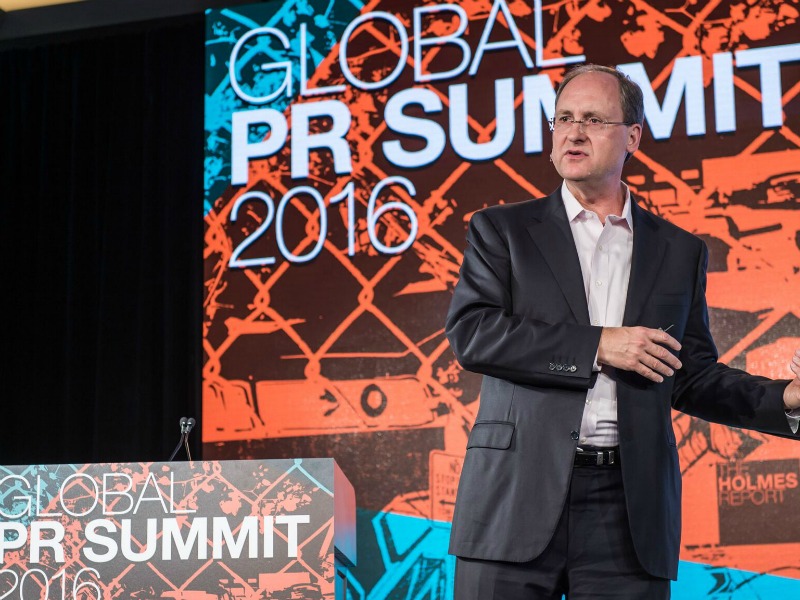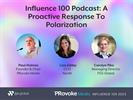Paul Holmes 25 Oct 2016 // 2:22PM GMT

MIAMI—Companies like AIG are tapping into a new class of “data influencers” to communicate and amplify their messages, the audience at PRovoke16 learned this morning, at a session sponsored by Hill+Knowlton Strategies.
Building on research conducted by H+K’s Research+Data Insights group, the session explored the growing importance of data influencers, a small subset of the US population “who are not just literate but data-savvy, and also active in their communities and their work and turn to data to solve problems in new ways.”
Research+Data Insights group chairman Peter Zandan kicked off the session with a summary of the research, telling the audience that corporations are using data more than ever before. Indeed, data is the foundation of businesses from Facebook and Google to Uber and Airbnb. But there has been little research until now into how the public understands and uses data.
According to the H+K research, 36 percent of Americans are data literate—they have the ability to read, understand and communicate data—while 19 percent are data savvy, having the ability to really work with data. And large numbers—in the 90 percent range—value data, find data persuasive, and use data in making decisions.
Beyond that, though, a new breed of data influencers—about 10 million people, or six percent of the population—who are not only data savvy but are using data to influence others. And H+K client AIG is one of the first to try to tap into these new influencers.
According to David May, chief marketing officer at AIG (pictured), “Insurance has always been all about data—but in recent years the company has had to reckon with the power of data as an actor, not just an input and the limits of data when it comes to influencing opinion and shaping a narrative.”
The financial services giant continues to grapple with the fallout from its role in the global financial crisis seven years ago.
“As you look at AIG, the financial crisis of 2009 is what comes to mind,” said May. “It’s something we still have to deal with. It’s a political brand, and our name is still being bandied about in this campaign. But we paid back $182 billion to American taxpayers and $22 billion in profits. That’s cold hard data, but it has not been able to dominate the narrative. It’s an example of how hard it can be for data to shape the narrative.”
The company has been using data to understand how the brand is perceived. The rebound over the last eight years, for example, has been significant. But looking at a broad range of other companies that have experienced crises—from Goldman Sachs to BP—it was clear that those with aggressive paid messaging have rebounded more quickly.
That posed a problem for AIG, which not primarily a consumer-focused company. While the insurance sector as a whole spends $4.2 billion on paid advertising, AIG’s spending was just around $8.6 million. so the company needed to find other ways to get its message out, and so the company chose to tap into the power of consumer recommendation and influencer outreach.
Its research showed the growing influence of recommendations—on consumers, influencers, actuaries and others—and delivered the insight that “you can’t hit these people over the head, you had to bring them into the conversation.”
Julia Pawling, senior specialist, global brand marketing at AIG, was charged with developing the campaign, and quickly found another of topics that data influencers were particularly interested in, from the company’s work insuring drones to its participation in the home sharing economy and crowdfunding—all hot topics for data influencers.
The company used paid and organic social and paid search as part of its channel mix (AIG also sponsored a national drone race on ESPN) and used heat mapping to quickly learn what data influencers were most interested in. The campaign achieve d a 75 percent read rate, which meant data influencers were spending more than 40 seconds with our content.
While the campaign is in its early stages, the evidence is that data influencers are not only engaging with the company’s messaging in a big way, but having a tangible influence on the company’s reputation and brand.


































.jpg)

















